5 Innovative Ships Reducing CO2 Emissions from Sea Freight
Reducing the carbon footprint is a global goal and whether you check the news, Instagram, or company annual reports, you’ll find various projects and initiatives focused on this goal. For instance, to reduce CO2 emissions from maritime transport, ships that are powered by liquified natural gas (LNG), green methanol, or electricity are already sailing around the world. Take a look at which ships and which companies are pioneering a green future.
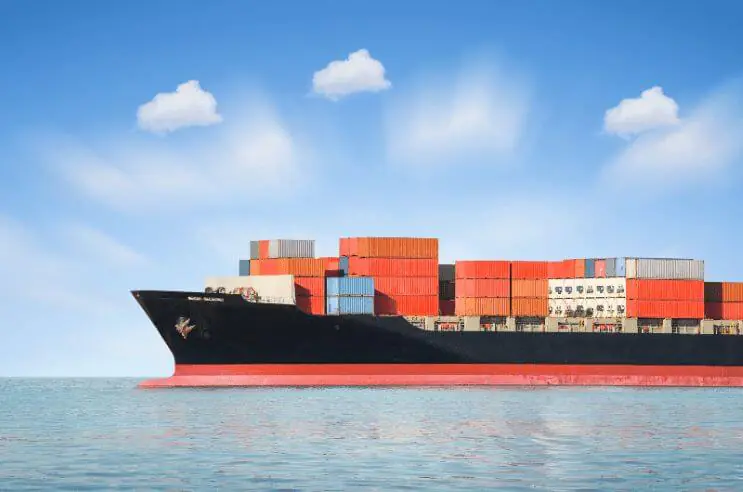
Source: www.canva.com
This article will focus on carbon-neutral ships, but it is also useful to look at carbon dioxide (CO2) emissions from a broader perspective to understand that ships powered by fossil fuels are neither the only nor the main contributors to CO2 emissions in the atmosphere.
What do the statistics say?
According to Statista.com, in 2023, the global power sector (including power plants, heating plants, thermal power stations, and industrial energy networks) had the largest share, accounting for 38% of global CO₂ emissions. The transportation sector came in second, contributing to “just” over 21% of global CO₂ emissions. How much is 21% in actual numbers? 8.24 billion metric tons (GtCO₂).
Another interesting fact is that, despite the efforts of countries, companies, and individuals to become more environmentally friendly, global CO₂ emissions from transportation increased by almost 80% between 1990 and 2023.
Finally, freight transportation accounts for approximately 8% (3212 million metric tons) of global greenhouse gas emissions.
- Air freight in 2020 generated an estimated 155 million tons (0.39%) of CO₂ emissions,
- Rail freight produced 170 million tons (0.42%) of CO₂ emissions in 2020,
- Road freight emitted more than 2,230 million tons (5.56%) of CO₂ in 2020,
- Sea freight released 657 million tons (1.64%) of CO₂ in 2020 (climate.mit.edu, 2023).
From the statistics above, it is clear that sea freight is responsible for a large amount of CO2 emissions each year. Therefore, it is encouraging that international organizations (such as the United Nations (UN), European Union (EU), and others) are setting new standards and goals for sustainable development to support this transition to ensure that more than just sea freight will have a reduced impact on the environment.
Tip: Don’t want to just passively watch but also want to pitch in and be more sustainable? Read our article where you will find 5 solutions that will help you be more eco-friendly.

Source: www.canva.com
What is carbon neutrality?
Before we dive into specific examples of cargo ships that are carbon-neutral, here are some definitions of carbon neutrality.
Carbon neutrality refers to a balance between the number of emissions a subject (such as a company) produces and the amount it can absorb through so-called carbon sinks. A carbon sink is a system that absorbs more carbon than it emits. The main natural carbon sinks are soil, forests, and oceans.
How does one achieve a carbon-neutral footprint? There are several ways to reach or at least get closer to carbon neutrality.
- Reducing emissions: You can reduce emissions by optimizing processes, switching to renewable energy sources, and so on. Take, for example, a logistics company. By using load planning software, the company can save on the number of miles driven and thus reduce CO₂ emissions. Or it can use more ecological modes of transport. Want to know which ones they are? Read our article to find out.
- Carbon offsetting: Investing in projects that reduce or remove CO₂ from the atmosphere. For instance, as a company, you can invest in a project that ensures reforestation.
- Innovative technologies: You can participate in the development of new technologies that reduce carbon footprints such as electric vehicles, green hydrogen, and sustainable fuels.
Good to know: Under the Climate Law, Europe is committed to achieving carbon neutrality by 2050.
Carbon neutral ships
Carbon-neutral ships are vessels that create a carbon-neutral footprint. This means that:
- either they produce no CO₂ emissions at all,
- or the amount of CO₂ they do produce is balanced by an equivalent amount of CO₂ removed from the atmosphere.
What is the difference between carbon dioxide and greenhouse gases?
Carbon dioxide is a specific greenhouse gas. CO₂ contributes to global warming by trapping heat in the atmosphere. On the other hand, greenhouse gases include various gases in the atmosphere, such as methane, nitrous oxide, and fluorinated gases, in addition to CO₂. Like CO₂ itself, greenhouse gases also contribute to global warming.
These are enough statistics and definitions to move on to our next point. Let’s take a look at specific projects and initiatives in the field of carbon-neutral ships. There are various technologies that lead to more sustainable shipping. Although large carbon-neutral cargo ships are not yet the standard in maritime transport, some of them are already sailing the world’s oceans.
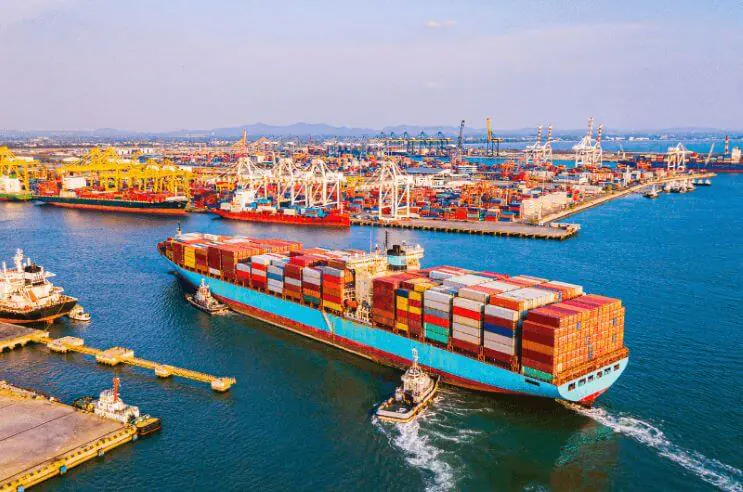
Source: www.canva.com
1. Yara Birkeland—One of The First Autonomous Cargo Ships in the World
“Yara Birkeland is the world’s first fully electric and autonomous container vessel with zero emissions. With this container vessel, Yara will reduce diesel-powered truck haulage by 40,000 journeys a year” (yara.com).
The President and CEO of Yara, Svein Tore Holsether, said that with Yara Birkeland, they will shift transportation from road to sea, thereby reducing the noise and dust caused by road transport. Most importantly, it will also reduce NOx (groups of nitrogen oxides—nitric oxide (NO) and nitrogen dioxide (NO2)) as well as CO₂ emissions.
Here are some interesting facts about the Yara Birkeland:
- Cost: $25 million.
- Naming: It is named after its owners, Yara International, and its founder, Norwegian scientist Kristian Birkeland.
- Cargo Capacity: Up to 120 TEU (Twenty-foot Equivalent Units).
- Tonnage: 3,200 DWT (Deadweight Tonnage).
- Length: Over 80 meters (260 feet).
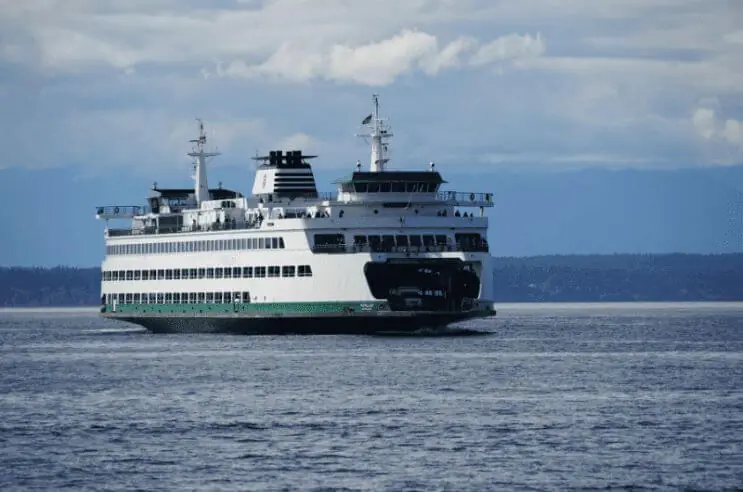
Source: www.canva.com
2. Scandlines Hybrid Ferries—World’s Largest Hybrid Fleets
Scandlines Hybrid Ferries combine traditional diesel power with electric batteries. Of course, the main advantage of hybrid ferries is that they are more eco-friendly (reducing CO₂ emissions by up to approximately 15,000 tons per year) compared to conventional ferries operating solely on diesel.
Facts about the ferries:
- Operating Route: The ferries operate between Germany and Denmark.
- Fleet Composition: The fleet consists of a total of 6 hybrid ferries and one freight ferry (4 of the ferries were originally diesel-powered and were converted to hybrid between 2013 and 2014. Two ferries were built as hybrid vessels in 2016).
- Names: Two of these ferries are named M/V Prins Richard and M/V Prinsesse Benedikt.
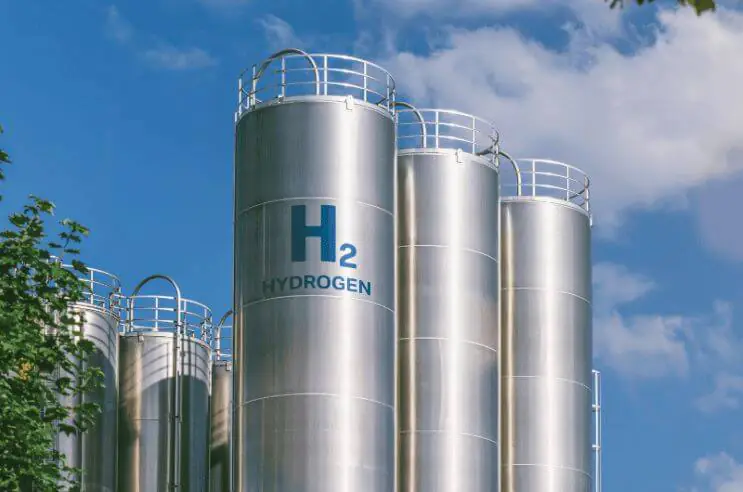
Source: www.canva.com
3. Energy Observer—The First Vessel to Achieve Energy Autonomy with Renewable Energy and Hydrogen
“Energy Observer is the name of a boat, self-sufficient in energy, with zero emissions, zero fine particles, zero noise, as well as being a symbol of our awareness rising and our ambitions at the service of ecological transition. We designed her to prove that entirely decarbonised, decentralised and digitised energy is possible, that such a virtuous circle is achievable” (energyobserver.org).
Energy Observer set sail in 2017 for its six-year journey (until 2022), visiting 50 countries and 101 ports. The goal of the expedition was to show how ecology and technology can coexist as well as to demonstrate that it is possible to reduce environmental impact without sacrificing comfort.
Tip: Since we’ve mentioned ports, are you curious about where to find the largest ports in the world? You can find more information about the biggest ones in our article.
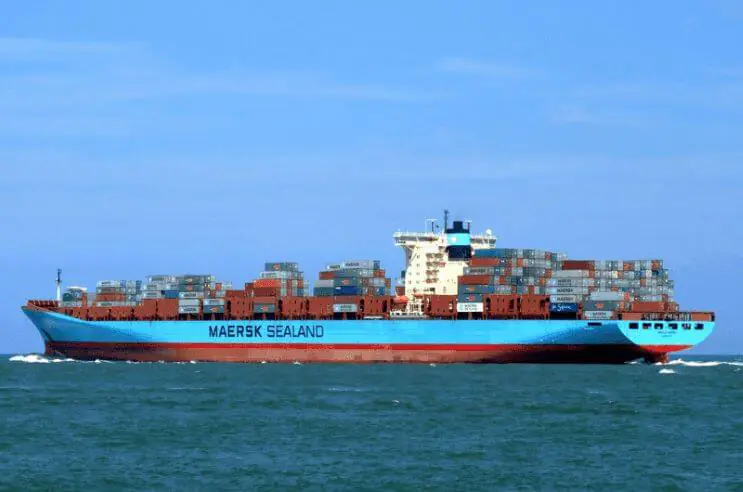
Source: www.canva.com
4. Maersk Line—World’s First Carbon Neutral Cargo Ship
“Our ambition to have a carbon neutral fleet by 2050 was a moonshot when we announced it in 2018. Today we see it as a challenging, yet achievable target to reach”
– Søren Skou, CEO, A.P. Moller – Maersk. This was the company’s claim in 2021, but just three years later, it now states on its website that it aims to achieve carbon neutrality by 2040.
The world’s largest container shipping company has launched the first cargo ship powered by green fuel. This innovative vessel is equipped with two engines: one running on traditional fuels and the other on green methanol (made from renewable resources such as biomass or captured carbon and hydrogen). In comparison to ships that run on diesel, the ship emits 100 tons less carbon dioxide per day.
When this modern cargo ship was ordered (in 2021), it was the only one of its kind. Since then, another 125 ships operating on the same principle have been ordered. The future seems green, doesn’t it? Maybe at first glance, but on the other hand, this solution is currently only suitable for smaller cargo ships. Another challenge is also ensuring an adequate supply of carbon-neutral methanol.
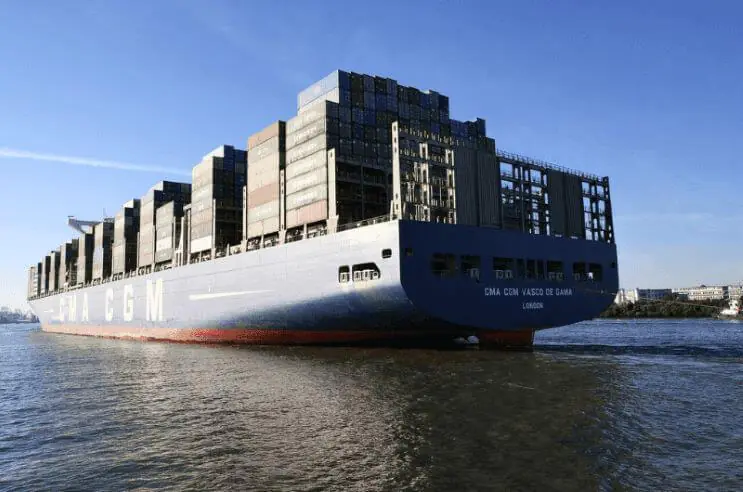
Source: www.canva.com
5. CMA CGM— LNG-powered container ship
The company launched its first LNG-powered container ship, named CMA CGM Jacques Saadé, in 2020. Since then, a few more LNG-powered ships have been added. The latest addition is the CMA CGM Belem, which measures 336 meters (1.102 ft) in length and has a maximum capacity of 13,200 TEUs. This LNG-powered vessel is expected to reduce greenhouse gas (GHG) emissions by 28% and methane slip by 50%.
What Does the Future Hold for Cargo Ships?
International organizations such as the EU (European Union) and IMO (International Maritime Organization), along with major companies like Maersk, MSC (Mediterranean Shipping Company), CMA CGM, and others, are investing in technologies and fuels that can reduce the carbon footprint of maritime transport. And yes, although carbon-neutral ships are not yet the standard, it is expected that with ongoing development and the adoption of new technologies, shipping will become more environmentally friendly and sustainable. A green future for shipping is thus not only possible but also on the horizon.




